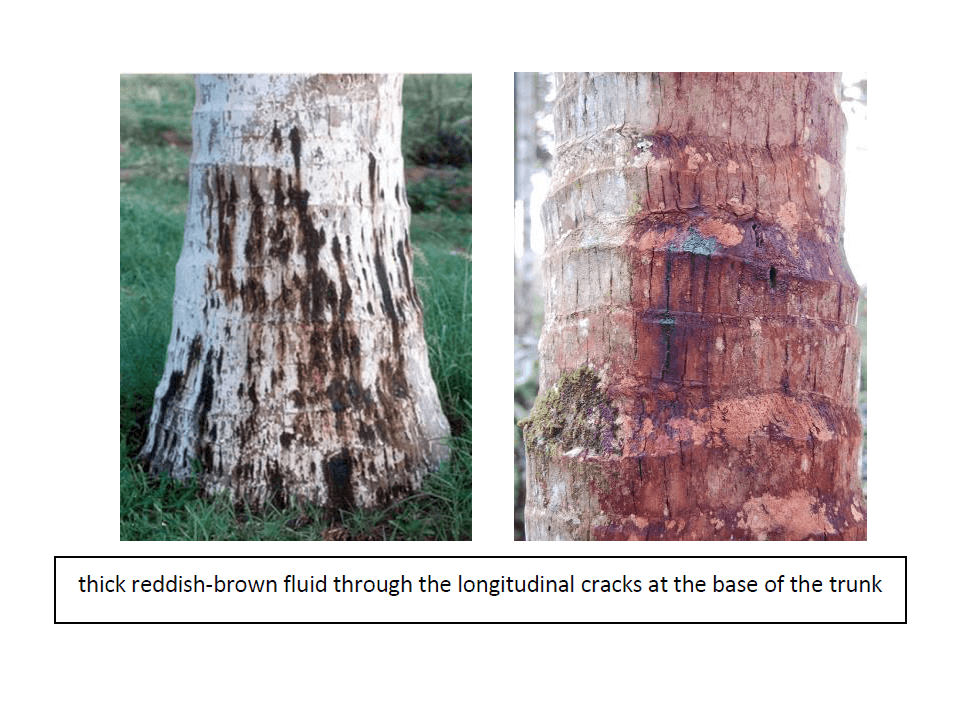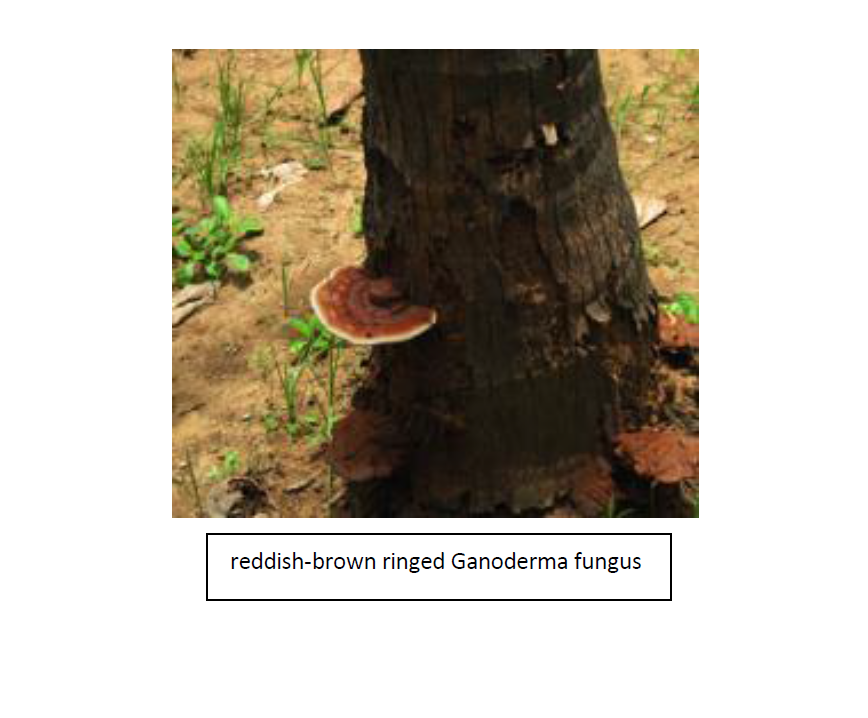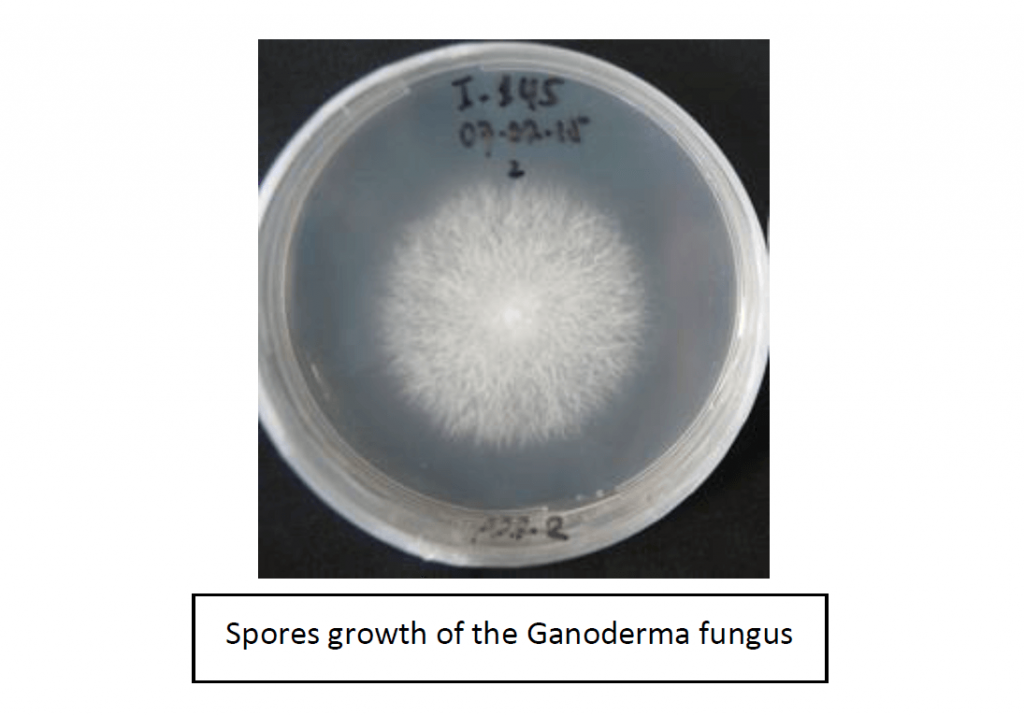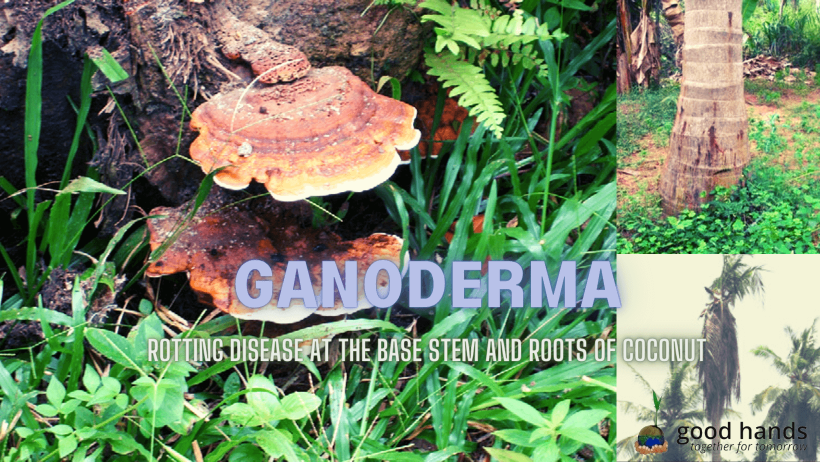This disease is caused by a fungus named “Ganoderma boninense”. The disease is prevalent in the Hambantota District in Southern Province, Sri Lanka. The disease is most common in coconut trees over 15 years of age. The disease spreads very slowly and causes decay at the base of the coconut roots and the trunk. The coconut tree dies about 3 or 8 years after infection. The disease is mainly spread by contact with diseased roots and healthy roots.
Symptoms
• The first visible feature is the secretion of a thick reddish-brown fluid through the longitudinal cracks at the base of the coconut trunk. At the same time the root decaying could be seen on the Base of the stem.
• The said, thick fluid in the base will spreads up to about 4 m on the tree.
• Major visible features of the disease are; drying of the immature leaves, change in the colour of the leaves from green to pale yellow.
• These symptoms get extend to the upper branches. The fungus destroys the internal tissues and root system of the plant, causing the lower floor branches to low.
• The number of female flowers and fruits also begin to decrease.
• After infection, the frond becomes thin and the branches and coconut clusters fall off prematurely. Along with this, the shortening of the branches can also be seen.
• Decay at the base and base of the stem gradually spreads to the stem.
• As the damage increases, a reddish-brown ringed Ganoderma fungus can be seen at the base of the exposed roots and stem.
• In addition, the young leaf blades of the exposed bud become infected with bacteria and other fungi and begin to rot, causing a foul odor in the bud area.


How the disease spreads
This is a soil borne disease. The spores released by the pathogenic fungus spread in the soil and infect the coconut roots. The disease is spread by collision of diseased roots with healthy roots. Pathogenic spores are also spread by wind and water. In addition, the spread of the disease/spores is caused by the movement of infected parts of the coconut tree. Once infected, it is difficult to save diseased trees. Therefore, it is imperative to prevent the spread of the disease.



Leave a Reply